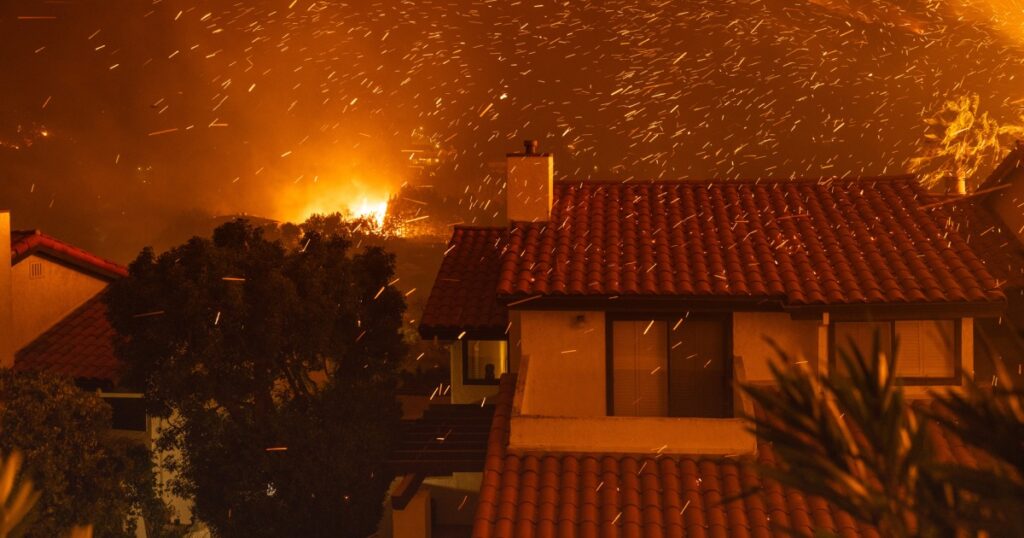“The low-moisture content in the vegetation that we get in these extreme dry periods leads to these highly, highly vulnerable conditions,” said Mark Gold, director of water scarcity solutions at the Natural Resources Defense Council. “And boy, when a big Santa Ana hits, that’s when the nightmare for our firefighters really kicks in.”
The Santa Ana winds form in a western area of the country known as the Great Basin, which includes Nevada and part of Utah. The basin sits at a higher elevation than Southern California.
In cooler months — typically September to May — cold air in the basin is forced downhill and westward toward low-pressure areas along the Southern California coast. As the air travels, it’s squeezed through mountain passes and canyons, picking up speed and becoming hotter and drier along the way.
By the time they reach Southern California, the winds can move at a speed of 40 mph, with gusts that are even stronger.
Robert Fovell, a professor of atmospheric and environmental sciences at the University of Albany, said the windiest areas tend to be Ventura County in Los Angeles and Santa Ana in Orange County, from which the winds derive their name.
But this year, he said, the winds were able to travel over the San Gabriel Mountains down to Pasadena and Altadena, where the Eaton Fire is located.

